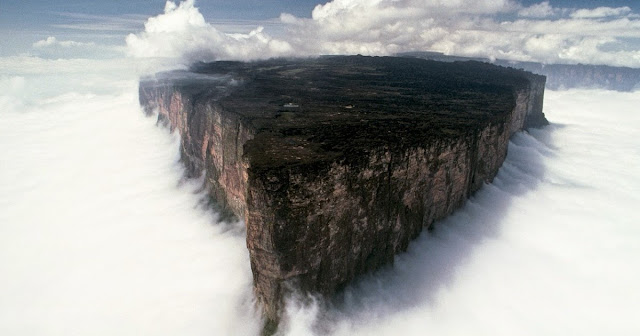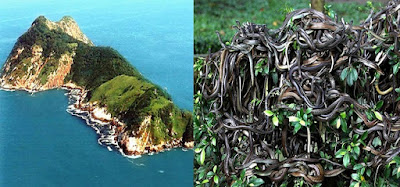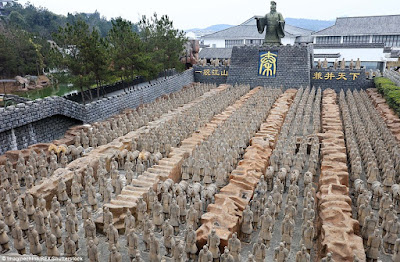Mount Roraima

Mount
Roraima is the highest of the Pakaraima chain
of tepui plateaus in South America.
First described by the English explorer Sir Walter
Raleigh during his expedition in 1595, its 31-square-kilometre
(12-square-mile) summit areais bounded on all sides by cliffs rising 400 metres (1,300 ft). The
mountain also serves as the triple border point of Venezuela (85%
of its territory), Guyana (10%) and Brazil (5%).
Mount
Roraima lies on the Guiana Shield in the southeastern corner
of Venezuela's 30,000-square-kilometre
(12,000-square-mile) Canaima National Park forming the
highest peak of Guyana's Highland Range. The tabletop mountains of the park are
considered some of the oldest geological formations on Earth, dating back to some
two billion years ago in the Precambrian.
The
highest point in Guyana and the highest point of the Brazilian state of Roraima lie
on the plateau, but Venezuela and Brazil have higher mountains elsewhere.
The triple border
point is at 5°12′08″N 60°44′07″W,
but the mountain's highest point is Maverick Rock,
2,810 metres (9,219 ft), at the south end of the plateau and wholly within
Venezuela.
Habitats

Many
of the species found on Roraima are unique to the tepui plateaus with two local
endemic plants found on Roraima summit. Plants such as pitcher
plants (Heliamphora), Campanula (a
bellflower), and the rare Rapatea heather
are commonly found on the escarpment and summit. It rains almost every day of
the year. Almost the entire surface of the summit is bare sandstone,
with only a few bushes (Bonnetia roraimœ) and algae present. Low
scanty and bristling vegetation is also found in the small, sandy marshes that
intersperse the rocky summit. Most of the nutrients that
are present in the soil are washed away by torrents that cascade over the edge,
forming some of the highest waterfalls in the world.
There
are multiple examples of unique fauna atop Mount Roraima. Oreophrynella quelchii, commonly
called the Roraima Bush Toad, is a diurnal toad
usually found on open rock surfaces and shrubland. It is a species of toad in
the family Bufonidae and breeds by direct development.
The
species is currently listed as vulnerable and there is a need for
increased education among tourists to make them aware of the importance of not
handling these animals in the wild. Close population monitoring is also
required, particularly since this species is known only from a single location.
The species is protected in Monumento
Natural Los Tepuyes in Venezuela, and Parque
Nacional Monte Roraima in Brazil.
Lives and their
cultures
Since
long before the arrival of European
explorers, the mountain has held a special significance for the indigenous
people of the region, and it is central to many of their myths and legends. The
Pemon Kapon natives of the Gran Sabana see
Mount Roraima as the stump of a mighty tree that once held all the fruits and
tuberous vegetables in the world. Felled by Makunaima, their mythical
trickster, the tree crashed to the ground, unleashing a terrible flood. Roroi in
the Pemon language means blue-green and ma means great.
Ascents
Although
the steep sides of the plateau make it difficult to access, it was the first
recorded major tepui to
be climbed: Sir Everard im Thurn walked up a forested ramp
in December 1884 to scale the plateau. This is the same route hikers take
today.
The
only non-technical route to the top is the Paraitepui route from Venezuela; any
other approach will involve climbing gear. Mount Roraima has been climbed on a
few occasions from the Guyana and Brazil sides, but as the mountain is entirely
bordered on both these sides by enormous sheer cliffs that include high
overhanging (negative-inclination) stretches, these are extremely difficult and
technical rock climbing routes. Such climbs would
also require difficult authorizations for entering restricted-access national
parks in the respective countries.
In
Brazil the Monte Roraima National Park lies
within the Raposa Serra do Sol Indigenous Territory,
and is not open to the public without permission.
The
2013 Austrian documentary Jäger des Augenblicks - Ein
Abenteuer am Mount Roraima (Moment Hunters - An Adventure on Mount Roraima) shows
rock climbers Kurt Albert, Holger Heuber, and Stefan Glowacz climbing
to the top of Mount Roraima from the Guyana side. Similarly, in 2010 Brazilian
climbers Eliseu Frechou, Fernando Leal and Márcio Bruno opened a new route on
the Guyanese side, climbing to the top in 12 days of a very difficult vertical
wall climb. They
called the new route Guerra de Luz e Trevas (Portuguese for
"War of Light and Darkness") and classed it as 6° VIIa A3 J4. A
28-minute Vimeo video called Dias de
Tempestade (Days of Storm) is available documenting their
climb (English subtitles, audio in Portuguese).





Comments
Post a Comment
Your suggestions